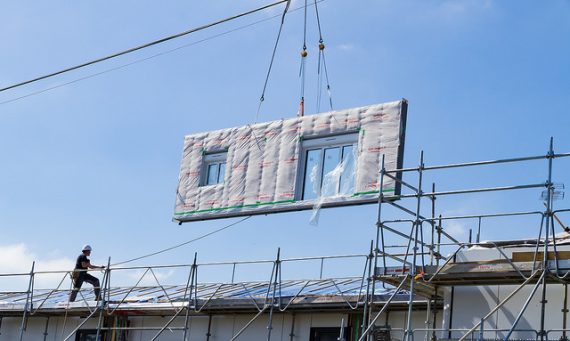‘The Economist’ on failure to reduce greenhouse emissions, Energiesprong named as a step towards the solution
“Many governments in the rich world want to reduce greenhouse-gas emissions from constructing and using buildings,” stated ‘The Economist’ in its January 5th 2019 edition. “With some wonderful exceptions, they are failing”.
The Scale of the Problem
The article states that: “The International Energy Agency (IEA), a research group, estimates that putting up and running buildings consumes 36% of the world’s energy and produces some 40% of energy-related carbon emissions. More than 5bn tonnes of cement—the raw material for concrete and mortar—is produced each year, adding a further 6% of emissions. The steel industry, half of whose production goes into construction, accounts for another 8%”.
And yet despite pledges by world leaders in 2015 to prevent global temperatures from rising more than 2°C above pre-industrial levels, progress remains painfully slow.
The failure of carbon taxation and subsidy/loan initiatives
Governments have, by and large, avoided the obvious but politically unpopular route of imposing carbon taxation on households. “One problem is that the poor feel the hit from green taxes especially hard,” explains ‘The Economist’.
And neither have more pro-active incentives succeeded.
The third way – zero energy
Instead, rich-world governments are increasingly focussing their attention on forcing their construction industries to comply with ‘net zero energy’ or ‘nearly zero energy’ standards. The EU has already legislated that from January 2019 all new public sector buildings must be built to ‘nearly zero energy’ standards.
“Regulations and standards are less efficient than taxes”, continues ‘The Economist’, “but they are a politically palatable way of reducing emissions caused by the construction of buildings and their operation. They bury the costs of environmental action in house prices and office rents, where consumers cannot see them as readily as in monthly heating bills”.
Energiesprong as an example
Energiesprong, along with ‘The Powerhouse’ project in Trondheim, Norway, are both cited as examples where the technology to retrofit or build to net zero energy already exists: “The technology to build and retrofit buildings to cover their carbon footprint already exists. One such system is Energiesprong from the Netherlands, which clads entire apartment blocks and terraces in insulation and solar panels to the point where they can generate all the energy they need themselves. Some buildings can now produce more renewable electricity than they use, which helps to offset the emissions used in their construction. Norway is a pioneer. The Powerhouse in central Trondheim produces 49 kWh per square metre of floor space per year from solar panels and consumes just 21—an impressive achievement for a building just 350km from the Arctic Circle.”
Read the full article of ‘The Economist’

Longueau, France. Photographer Fabrice Singevin